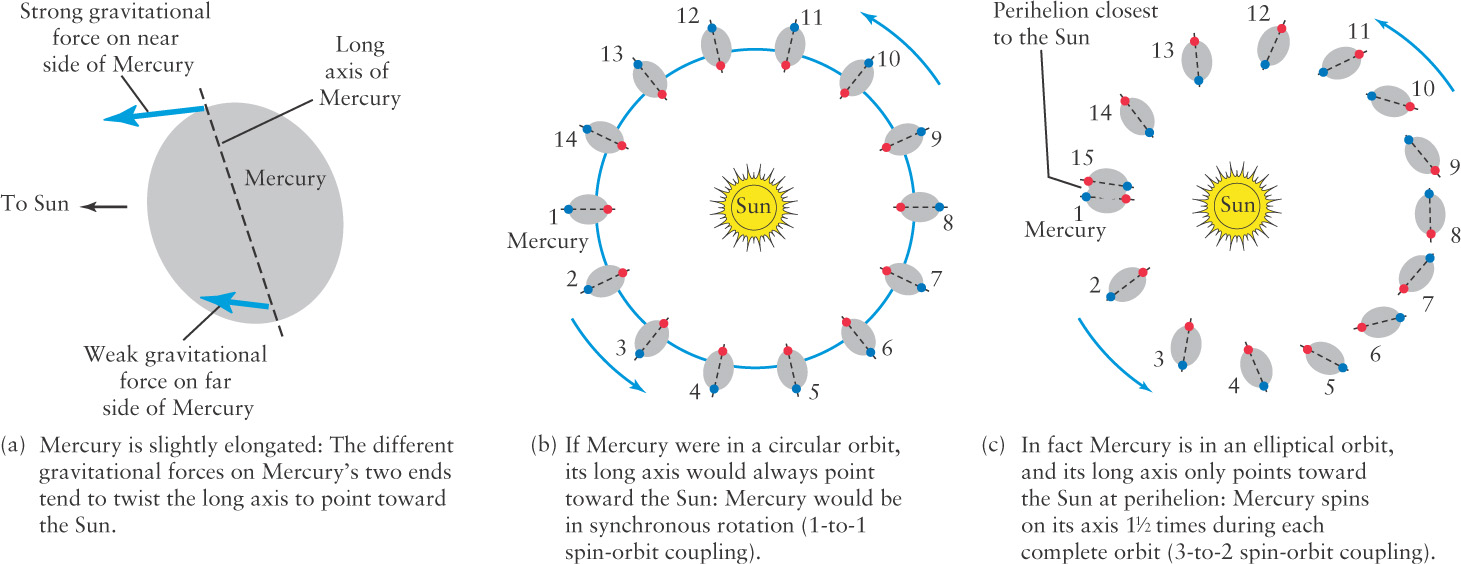
Figure 11-3:  Mercury’s Spin-Orbit Coupling (a) The Sun’s gravitational force on the near side of Mercury’s long axis is greater than the force on the far side. This tends to twist the long axis to point toward the Sun. (b) If Mercury were in a circular orbit, the twisting effect shown in (a) would always keep the same side of Mercury (shown by a red dot) facing the Sun. (c) Because Mercury’s orbit is rather elongated, its rotation is more complex: The end of Mercury’s long axis marked by a red dot faces the Sun at one perihelion (point 1), but at the next perihelion (point 15) the opposite end—marked by a blue dot—faces the Sun.
Mercury’s Spin-Orbit Coupling (a) The Sun’s gravitational force on the near side of Mercury’s long axis is greater than the force on the far side. This tends to twist the long axis to point toward the Sun. (b) If Mercury were in a circular orbit, the twisting effect shown in (a) would always keep the same side of Mercury (shown by a red dot) facing the Sun. (c) Because Mercury’s orbit is rather elongated, its rotation is more complex: The end of Mercury’s long axis marked by a red dot faces the Sun at one perihelion (point 1), but at the next perihelion (point 15) the opposite end—marked by a blue dot—faces the Sun.
 Mercury’s Spin-Orbit Coupling (a) The Sun’s gravitational force on the near side of Mercury’s long axis is greater than the force on the far side. This tends to twist the long axis to point toward the Sun. (b) If Mercury were in a circular orbit, the twisting effect shown in (a) would always keep the same side of Mercury (shown by a red dot) facing the Sun. (c) Because Mercury’s orbit is rather elongated, its rotation is more complex: The end of Mercury’s long axis marked by a red dot faces the Sun at one perihelion (point 1), but at the next perihelion (point 15) the opposite end—marked by a blue dot—faces the Sun.
Mercury’s Spin-Orbit Coupling (a) The Sun’s gravitational force on the near side of Mercury’s long axis is greater than the force on the far side. This tends to twist the long axis to point toward the Sun. (b) If Mercury were in a circular orbit, the twisting effect shown in (a) would always keep the same side of Mercury (shown by a red dot) facing the Sun. (c) Because Mercury’s orbit is rather elongated, its rotation is more complex: The end of Mercury’s long axis marked by a red dot faces the Sun at one perihelion (point 1), but at the next perihelion (point 15) the opposite end—marked by a blue dot—faces the Sun.